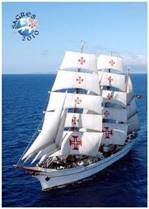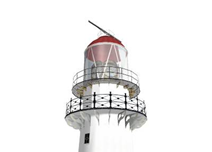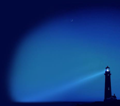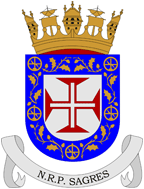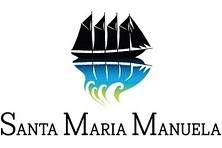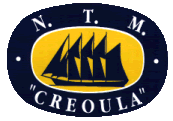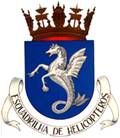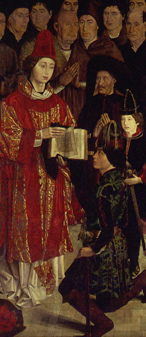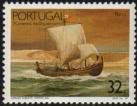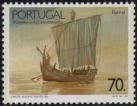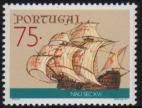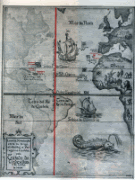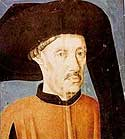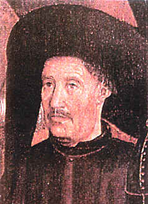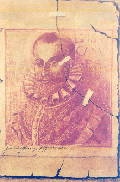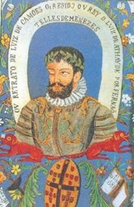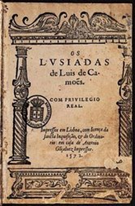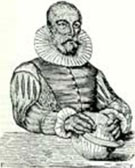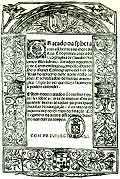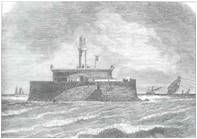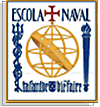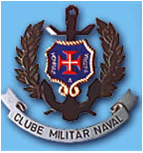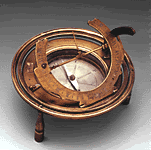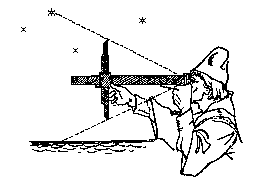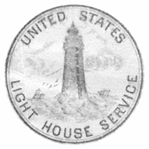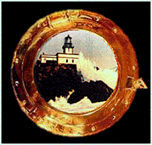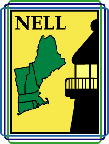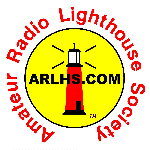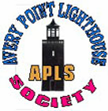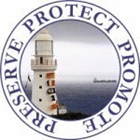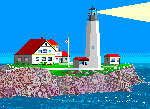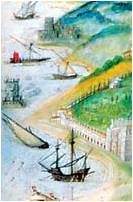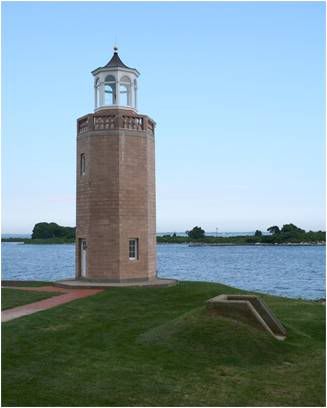
Description: The Avery Point Lighthouse had a very brief life compared to other lights in the area (it was only active as a navigational aid from 1944 to 1967), and it never had a resident keeper. But its unique design makes it a favorite among lighthouse aficionados, although only the dedicated efforts of a group called the Avery Point Lighthouse Society (APLS) saved this structure from almost certain oblivion. The lighthouse is located on shore at Avery Point, at the east side of the Thames River entrance in Groton, Connecticut. Avery Point was originally named for an early settler to the area named Captain James Avery. For a long time the 73-acre site served as the huge estate of a wealthy industrialist named Morton F. Plant. Plant died in 1918, and in 1942 the land was sold to the state of Connecticut, which in turn handed it over to the Coast Guard. From 1942 to 1967 it was the site of the United States Coast Guard Training Center. Avery Point Lighthouse was the last to be built in Connecticut. It was finished in 1943, during World War II, and was not lighted right away due to concerns about possible enemy invasions by sea. It finally went into service on May 2, 1944. The unusual lighting consisted of eight 200-watt bulbs showing a fixed white light at 55 feet above sea level. Later on the light was changed to flashing green. In 1969, the land was returned to the state of Connecticut at no cost, and it became part of the University of Connecticut at Avery Point campus. Given the designation of Building #41 by the university, the former lighthouse building has been used as a physics laboratory and an air sampling station. By the late 1990s, the condition of the tower had deteriorated to the point where it was considered unsafe. Word got out to local residents, and the APLS was formed to save the Avery Point light. A petition drive gathered the signatures of over 19,000 people demanding the restoration and relighting of Avery Point. The University of Connecticut signed an agreement allowing the APLS to work on the lighthouse. Funding came from a variety of sources, including the sale of over 2,000 personalized bricks to individual donors, to be part of a landscaped walkway around the base of the tower. The tower’s concrete blocks were found to be crumbling, the result of high sand content, and were the first things to be replaced. The original lantern was lifted by crane and transported to the West Mystic Wooden Boat Building Company, which is owned by a former lighthouse keeper and a current English professor at the University of Connecticut. The company graciously donated its time and materials for the restoration project. The old wooden lantern was used as a template for the construction of the new replica lantern, which was lowered into place on September 30, 2005 as about fifty cheering spectators looked on. Extensive restoration and refurbishing continued during 2004 and 2005 under the auspices of the APLS. Thirty-two marble balusters originally imported from Italy were removed, cleaned and repaired by masons, and put back into place. Meanwhile, the interior had to be completely gutted and cleaned, with new electrical wiring, custom-made doors and windows, and fresh paint and other structural and cosmetic work applied. Local craftspeople and merchants donated many of the goods and services necessary to make the restoration complete. After six years of work and the expenditure of $500,000, a ceremony to relight the restored Avery Point Lighthouse was held on October 15th, 2006. The main speakers at the event were Fran Mainella, National Parks Service Director, Philip Austin, President of the University of Connecticut, and Rob Simmons, U. S. Congressman. The actual relighting was performed by three individuals representing the “Past, Present, and Future.” Ken Black, who was stationed at Avery Point when it was the Coast Guard Training Station represented the “Past.” Fran Mainella represented the “Present,” and Lexis Foster, the 12 year old granddaughter of APLS Co-Chairman Ron Foster represented the “Future.” References The Lighthouses of Connecticut, Jeremy D’Entremont, 2005. Northeast Lights: Lighthouses and Lightships, Rhode Island to Cape May, New Jersey, Robert Bachand, 1989. American Lighthouse Foundation.
Photo Text & Copyright www.Lighthousefriends.com
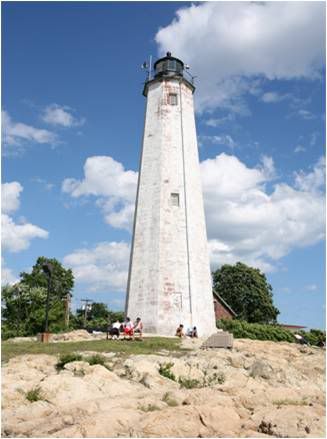 Just south of the Five Mile Point Lighthouse lies the grave of British Ensign and Assistant Adjutant Watkins, who met his end on July 5, 1779. The British, with their sights set on New Haven, attempted a landing at Five Mile Point, but the Americans were waiting. As he approached the shore, Watkins cried out from the lead boat, “Disperse ye rebels!” But they did not, and Watkins was killed in the subsequent battle. Five Mile Point, named for its distance from downtown New Haven, became the sight for a lighthouse in 1805, marking the entrance to New Haven Harbor. Mariners knew to give the light a berth of at least two miles to avoid a dangerous ledge to its southwest. The original lighthouse was a 30-foot octagonal wooden tower, with shingled sides and roof. Its light consisted of eight lamps with 13-inch parabolic reflectors, and was visible for six miles. In 1835, a 2 ½ story keepers dwelling was added to the station. The first keeper was Amos Morris, the landowner from whom the government purchased the tract of land for $100. The property had been in the Morris family since 1660, as part of an original grant by the Colony of New Haven.
Just south of the Five Mile Point Lighthouse lies the grave of British Ensign and Assistant Adjutant Watkins, who met his end on July 5, 1779. The British, with their sights set on New Haven, attempted a landing at Five Mile Point, but the Americans were waiting. As he approached the shore, Watkins cried out from the lead boat, “Disperse ye rebels!” But they did not, and Watkins was killed in the subsequent battle. Five Mile Point, named for its distance from downtown New Haven, became the sight for a lighthouse in 1805, marking the entrance to New Haven Harbor. Mariners knew to give the light a berth of at least two miles to avoid a dangerous ledge to its southwest. The original lighthouse was a 30-foot octagonal wooden tower, with shingled sides and roof. Its light consisted of eight lamps with 13-inch parabolic reflectors, and was visible for six miles. In 1835, a 2 ½ story keepers dwelling was added to the station. The first keeper was Amos Morris, the landowner from whom the government purchased the tract of land for $100. The property had been in the Morris family since 1660, as part of an original grant by the Colony of New Haven. 



